Lismore (wikipedia) is a subtropical town in northeastern New South Wales, Australia. Lismore is the main population centre in the City of Lismore local government area. Lismore is a regional centre in the Northern Rivers region of the State.
History
The city of Lismore lies in the Bundjalung people‘s nation area. However, the actual area of the Bundjalung people from Evans Head is currently under examination, as well as the actual origin of the name Bundjalung. It has been suggested that the Aboriginal people called the area Tuckurimbah meaning “glutton.” European history of Lismore begins in c. 1843. A pastoral run covering an area of 93 square kilometres (36 sq mi) was taken up by Captain Dumaresq at this time covering the Lismore area. The run was stocked with sheep from the New England area. Ward Stephens took up the run in the same year, but the subtropical climate was unsuited for sheep grazing, so the run was eventually abandoned. In January 1845, William and Jane Wilson took over the run. The Wilsons were Scottish, and they arrived in New South Wales in May 1833. One hypothesis is that Jane Wilson was responsible for naming the location for Lismore, Scotland, where the couple had honeymooned. Another theory is that it was named after Lismore, Ireland because of the similarity in scenery. In 1855, the surveyor Frederick Peppercorne was instructed by Sir Thomas Mitchell to determine a site for a township in the area. Peppercorne submitted his map of the proposed village reserve on 16 February 1856. The chosen site was William Wilson’s homestead paddock, and the area was proclaimed the “Town of Lismore” in the NSW Government Gazette on 1 May 1856. The township was soon settled and its Post Office was opened on 1 October 1859. Lismore was incorporated as a municipality on 5 March 1879, and was eventually proclaimed a city on 30 August 1946. From the mid-1950s until the early 1960s Lismore hosted an annual Floral Carnival in early September. The week-long programme of events culminated in a street parade of decorated floats, crowning of the Floral Queen and a fireworks display.
Rainforest
Lismore and surrounding towns were once part of the rainforest referred to as “The Big Scrub,” of which less than one percent remains following the European settlement. A section of this rainforest is viewable in the grounds of the Southern Cross University and at Wilsons Nature Reserve on Wyrallah Road.
Geography
Lismore is located on the Bruxner Highway and it lies at the confluence of the Wilsons River (a tributary of the Richmond River) and Leycester Creek, The state capital city of Sydney is located 764 km (475 mi) to the south by highway. Brisbane, the state capital of Queensland, is 200 kilometres (124 mi) to the north. Lismore’s central business district is located 35 kilometres (22 mi) from the eastern coast, and 46 kilometres (29 mi) southwest of Byron Bay. The coastal town of Ballina is 36 kilometres (22 mi) away. There are a number of rainforest patches in the area, remnants of the Big Scrub. These are preserved today, with a small pocket known as Boatharbour Reserve just east of town on the Bangalow road. The nearest large and publicly accessible national park is Nightcap National Park.
Climate
Lismore experiences a humid subtropical climate with mild to warm temperatures all year round and ample rainfall. Temperatures in summer range between 19 °C (66 °F) and 30 °C (86 °F). The subtropical climate combined with geographical features means the urban area is unusually humid when compared with surrounding areas, with humidity levels often reaching 100% in summer. Although no major environmental hazards affect the area, Lismore is renowned for frequent floods. One of the worst of these occurred in 1974, when waters rose to a height of 12.1 metres (40 ft). In 1954, Queen Elizabeth II and the Duke of Edinburgh almost became flood-bound by one such inundation when they were staying at the Gollan Hotel. Following a flood in 2001, the then Premier of New South Wales, Bob Carr, initiated a flood levee program to curb the problem. Nonetheless, around 3000 residents of Lismore were evacuated after floods affected much of the area on 30 June 2005, many being temporarily housed on the campus of Southern Cross University. However, a new levee that had been completed two weeks prior limited damage and stopped the water reaching the central business area. Lismore is often hit by severe storms in spring and summer. For example, there was a severe hailstorm on 9 October 2007. A tornado is an extreme rarity, but later that same month one struck nearby Dunoon. It was captured on video as it hit an electrical transformer station there. 16th September, Tuesday Goodbye Queensland, Hello New South Wales. We are staying in Lismore which is up in the mountains. It’s beautiful here and Lismore is an old town with some lovely churches and a beautiful Cathedral. The drive here was along the M1 (Bruce Highway and then changes to the Pacific Highway once we changed states). The traffic was very congested in parts and that is why we left at sparrows. It’s a very busy road as it is the main highway that goes to Brisbane and to Sydney. The weather is still glorious although we are in the mountains and I think that it will be a little chills at night time, no matter, we have extra blankets and it’s an excuse to cuddle up and watch a movie. Driving up through the ranges and the smell of the Eucalyptus trees is so strong. There are other smells of trees as well but we are not too sure what they are, it is quite heady. It is all so beautiful and we feel like we are on top of the world looking down. We drove through some beautiful little villages which we will visit tomorrow. The caravan park is not as structured as most and we had to ask for an extra fitting for the tap to the van as there was only one there and it was being used by another van. The owners are friendly and sorted the problem out straight away, we have heaps of space the amenities are clean and there are no awful RULE sheets issued on check in, which is a breath of fresh air. We get tired of those rules in some of these caravan parks. From the caravan park we can see the Cathedral and we hear the bells toll on the hour and it’s not annoying as some of you may think, the bells are actually quite a soft sound, it is so amazing and quite calming really. Tomorrow we will visit Byron Bay, Nimbin (which is the hippy capital of Australia and I believe you walk around there with a smile on your face because of the stuff that is been smoked there J ), should be interesting. We will also visit some of the little villages along the way. xxxxx
- M1
- Gateway bridge – Brisbane
- Gateway bridge – Brisbane
- NSW border
- Church – Lismore
- You can see we are in a different state, the beer signs have changed from XXXX.
- Court House – Lismore
- Church – Lismore
- Lismore town
- Lismore town
- Lismore town
- Lismore town
- Lismore town
- Lismore town
- Old postoffice and telegraph station – Lismore
- Bus station garden – Lismore
- Lismore town
- St. Pauls – Lismore
- St. Pauls – Lismore
- Lismore
- Lismore
- St. Carthage’scathedral – Lismore
- Part of the Cathedral – Lismore
- St. Carthage’scathedral – Lismore
- St. Carthage’scathedral – Lismore
- St. Carthage’scathedral – Lismore
- St. Carthage’scathedral – Lismore
- Spring has sprung in Lismore
17th September, Wednesday WOW, what a day we had today! It’s another glorious sunny day and we drove down the hill to Byron Bay through the most spectacular scenery again (this is getting boring, all this beautiful scenery we have to endure day after day). Like I said before the smell of the trees is amazing and everything is so green. There are cows grazing on the hillsides, it looks like paradise. Byron Bay is beautiful. It’s a very laid back, surfie, hippy, alternative type of place, anything goes. It has a great atmosphere and no hang ups. There are people living in the park, painting pictures, doing graffiti on the pavement but no-one minds as no-one bothers anyone else, it’s a live and let live type place. The beaches are beautiful but no-one is swimming as a swimmer got taken by a shark off Byron Bay Beach last week. He was only 15m out, which is wading type conditions really. We took a drive up to the light house and what a view of Byron Bay you get from there. The lookout from the lighthouse is awesome. The beaches are wide and long and not crowded, it’s heaven. From there we took the coast road to Ballina stopping off at Broken Heads and there are more beautiful beaches, not crowded, lots of surfies etc. etc., stop over again at Lennox Head and same old, same old, pristine wide beaches. We are so spoilt. You can see why the surfies like it here so much. From there we came back inland across up the mountains to Nimbin and again the most beautiful scenery, all green farmland, the pictures don’t do it any justice. Well, Nimbin, what a place. I have found this description of Nimbin on the net because it’s hard to describe. The place really is a hippy, druggy type place. Half the locals are stoned and wander around with not a care in the world. One local hippy said to me “You’re smiling, I like that because we smile all the time”, this cracked me up. There are dogs and chooks just wandering freely about the place crossing the street whenever and doing whatever. There is a very strong whiff of what is being smoked coming from most of the coffee shops and park benches. We wandered down an alley as we thought that it was a café and down the bottom there were about 8 blokes there, 2 with bandanas across their faces and they were selling dope. They had such huge bags of the stuff it was unreal. We are very naïve when it comes to this stuff. The asked us if we would like to buy and of course we declined. I took my camera out as there was a drawing of an elephant on the wheelie bin and bloke said “No picture, no pictures”, I explained that I only wanted a picture of the elephant. Honestly the sales were so blatant and there really was a lot of woopy weed they were dealing. All an experience and that is Nimbin for you. We sort of expected that anyway. It was a really good day, something different to tell you all. This is the description of Nimbin I was telling you about and it’s all true. Nimbin (wikipedia) Nimbin is notable for the prominence of its environmental initiatives such as permaculture, sustainability, self-sufficiency as well as the cannabis counterculture. Writer Austin Pick described his initial impressions of the village this way: “It is as if a smoky avenue of Amsterdam has been placed in the middle of the mountains behind frontier-style building facades. … Nimbin is a strange place indeed.” Nimbin has been described in literature and mainstream media as ‘the drug capital of Australia’, ‘a social experiment‘ and ‘an escapist sub-culture’. Nimbin has become an icon in Australian cultural history with many of the values first introduced there by the counterculture becoming part of modern Australian culture.
History
In 973 the Aquarius Festival, a large gathering of university students, practitioners of alternative lifestyles, ‘hippies’ and party people, was held in the village. The Festival was the first event in Australia that sought permission for the use of land from the Traditional Owners. After the festival hundreds of participants and festival goers remained in Nimbin to form communes and other multiple occupancy communities, in search of an “alternative lifestyle”. Nimbin in fact made legal history for the first ever application of group title ownership of land in Australia. Since the Aquarius Festival, the region has attracted thousands of writers, artists, musicians, actors, environmentalists and permaculture enthusiasts, as well as tourists and young families escaping city life.
Cannabis culture and MardiGrass
In New South Wales the cultivation, possession or sale of cannabis is punishable by law. In Nimbin, all three activities are part of every day hippie culture. Nimbin has a high tolerance for cannabis (marijuana), with the open buying, selling and consumption of locally grown cannabis on the streets and laneways. To rally for an end to the prohibition of cannabis in Australia, Nimbin has held an annual MardiGrass festival since 1993. On the first weekend with any part of it in May, thousands descend on Nimbin for cannabis oriented fun and frivolity. Activities include: a Prohibition Protest Rally and Parade with the Ganja Faeries, the Nimbin Cannabis Cup, the Hemp Olympix, which includes the Bong “Throw’n’Yell”, Joint Rolling, and the Grower’s Iron Person event, where runners must first carry a 20 kg (44 lb) sack of fertiliser, then a bucket of water, and finally “the crop”, as a tribute to the difficulties faced by growers in the hills, and to show that cannabis users can be fit and healthy. At night, entertainment ranges from the Harvest Ball and Picker’s Ball, rave doof parties, to poetry and jazz in local cafes. The prevalence of a drug culture in Nimbin since 1973 has been accompanied by a prevalence of collective and public creativity: colourful and spiritually-motivated art (including large paintings above the shop awnings), music, poetry, craft and fashion can all be seen on the main street. The town is also known as a hot-spot for alternative social activities, grass-roots political discourse, and the espousal of naturalist, humanist, anarchist, feminist, libertarian, permissive, new-age, mystical and radical social philosophies (which can all be seen as collective creative endeavours).
Police intervention
The level of police intervention against drug trafficking has fluctuated over the years, however the State and Federal Police have never been able to stop or even significantly reduce the prevalence of cannabis use in the village. In April 2008, a squad of 110 officers wearing bulletproof vests, six horses and police dogs conducted searches in a police operation. Several buildings were searched including the Hemp Embassy. Eight people were arrested, 72 people were issued cannabis cautions and police seized 4 kilograms (9 lb) of cannabis and cannabis ‘cookies’. Police sent letters to the Nimbin Museum and the Hemp Bar leaseholders indicating an intention to seek closure orders under the Restricted Premises Act of 1943 for the MardiGrass weekend. The Restricted Premises Act allows for the closure of premises for three days and orders may be obtained weekly. The Museum soon reopened with a new leaseholder while the Hemp Bar remained closed for eight months and reopened in January 2009. CCTV cameras in the main street of Nimbin had pushed dealing off the streets and into the museum and the Hemp Embassy had been requesting that police deal with the problem. Following the raids, Hemp Embassy volunteer Andrew Kavasilas commented: “This is a real slap in the face for people who would like to see other resources in town. We have been inviting the police to come down and sort out the dealing in the museum for years and this is their response. They could work with the community, but they’re not interested.” Many locals voiced their opposition to the Police operation. Following the operation, Richmond Police local area commander Superintendent Bruce Lyons vowed to “shut down the drug trade.”
- Church in Bangalow
- Lighthouse at Byron Bay
- Some of the scenery on the way
- Some of the scenery on the way
- Byron Bay
- Byron Bay
- Byron Bay
- Byron Bay
- Byron Bay
- Byron Bay
- Byron Bay
- Byron Bay
- Byron Bay
- Byron Bay
- Byron Bay
- Byron Bay
- Alternative, like I said – Byron Bay
- People live here – Byron Bay
- Artist in the park- Byron Bay
- The park with residents, Byron Bay
- Harmony and Understaning, some of you will know where I got this from – Byron Bay
- Harmony and Understaning, some of you will know where I got this from – Byron Bay
- Byron Bay
- Mobile Home – Byron Bay
- Byron Bay
- Broken Heads Beach
- Broken Heads Beach
- Broken Heads Beach
- Lennox Head Beach
- Lennox Head Beach
- Lennox Head Beach
- Lennox Head Beach
- Lennox Head Beach
- On the road to Nimbin
- A lovely homestead on the way to Nimbin
- Nimbin rocks
- Nimbin rocks
- Nimbin
- Nimbin
- Nimbin – the locals
- Abbott, don’t come to Nimbin
- Nimbin
- Nimbin
- Nimbin
- Nimbin
- Nimbin
- Nimbin – the locals
- This is what it’s all about
- Me and the locals
- Yes, indeed
- Nimbin
- Some of the local residents, the lady patting the dog liked the way I was smiling because she said that they always smile in Nimbin – I wonder why 🙂
- Nimbin time
- Of course
- My sort of shop
- Nimbin street
- Side alley – Nimbin
- All of the shop doors in Nimbin are painted in a variery of designs
- Main street – Nimbin
- Chooks, dogs, everything goes
- Very happy when you smell the smells 😉
- Nimbin main street
- Happy pot plants
- This is where the were selling the weed
- The elephant that nearly got me into trouble at the dealers den 😉
- Nimbin hotel and backpackers
- The happy bus
- Nimbin
- scupture – Nimbin
- Nimbin craft
- street art
- Nimbin hippy church
- Not sure what this is but it wasn’t a church, probably was at some stage
- St. Patricks – Nimbin
- The rainbow cottage Nimbin
- Welcomoe to Nimbin
- Welcomoe to Nimbin
- A tiny little school on the way – in the country
- A tiny little school on the way – in the country
- A tiny little school on the way – in the country
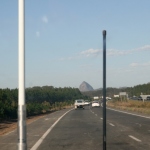
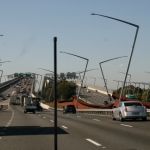
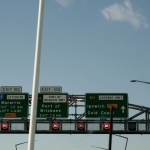
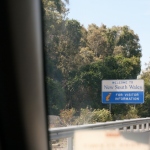
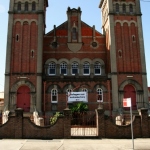

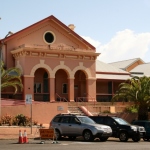
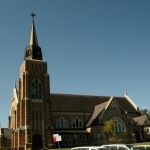
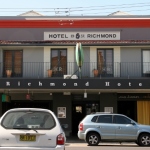
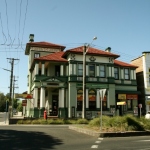
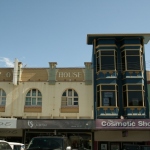
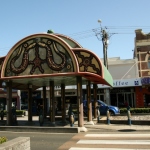
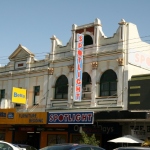
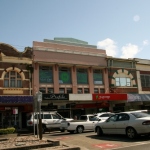

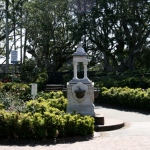

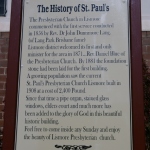
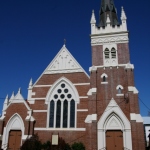

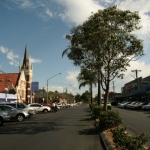


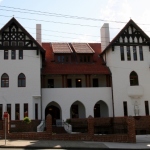
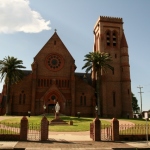
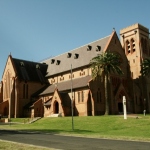
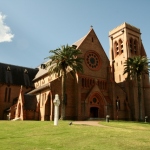

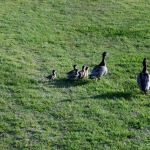

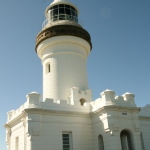

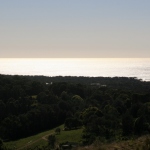
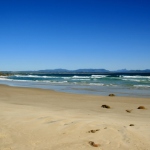

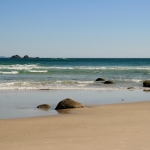


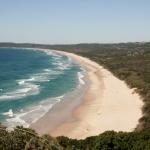

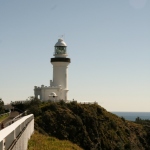
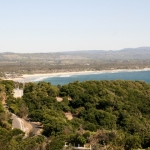







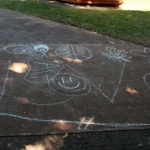
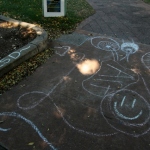
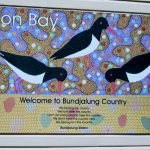
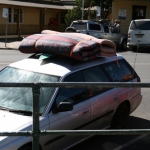

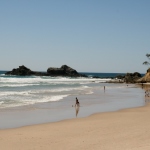
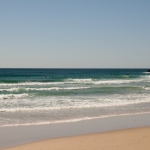
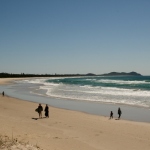
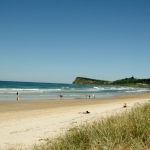
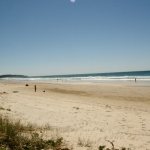


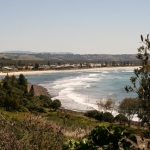

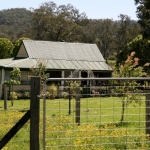
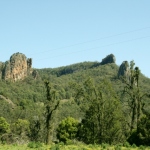
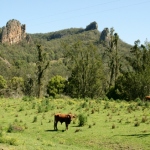
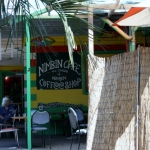
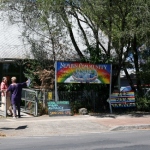

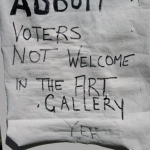


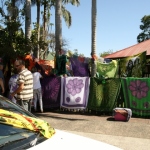
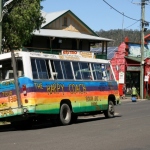
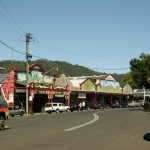
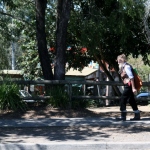
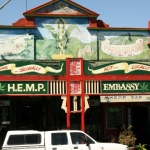
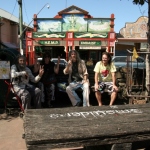
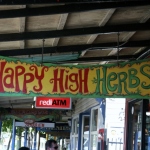
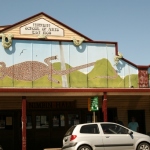
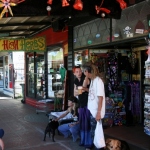
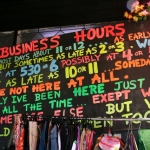


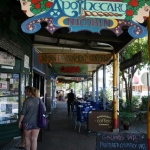


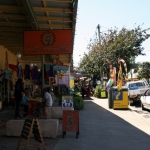
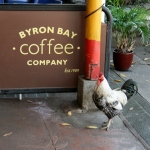
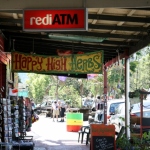
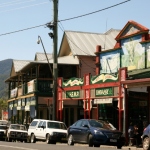

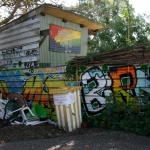

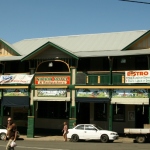

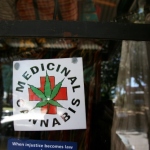

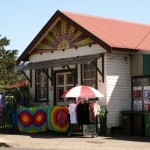
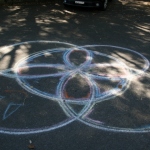
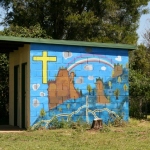
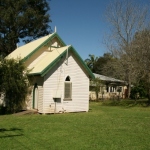
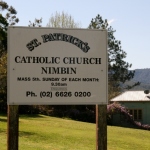
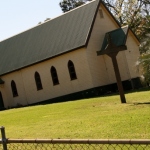
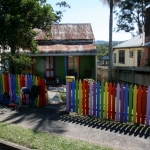


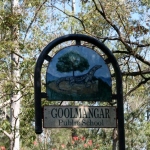
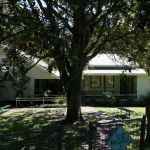
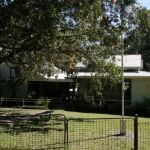
Beautiful pics. We love Byron Bay. Don’t smoke too much in Nimbin!! Safe travels you three!!! Glad to hear that you are still having a great time. Miss you!!!! xxxxxxxxxxxx Barb & Mike